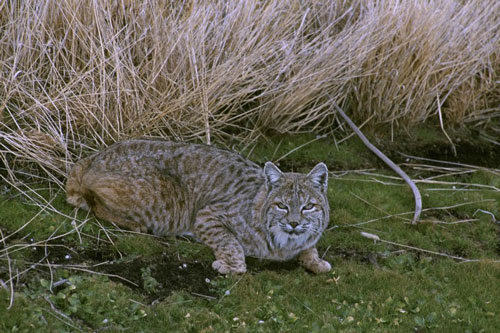 The fur market hasn’t exactly been as lucrative as the smartphone revolution, but there is one bright spot: bobcats. This elusive, yet widespread feline has been bringing in big bucks for nicely spotted northern pelts. Prices of $300 or more are not uncommon. If you want to get in on some of this cat cash you’ll need to change up your game plan and think catlike for success.
The fur market hasn’t exactly been as lucrative as the smartphone revolution, but there is one bright spot: bobcats. This elusive, yet widespread feline has been bringing in big bucks for nicely spotted northern pelts. Prices of $300 or more are not uncommon. If you want to get in on some of this cat cash you’ll need to change up your game plan and think catlike for success.
Fortunately for fur hunters, bobcats are distributed throughout the country with fewer found in the farm fields of the Midwest than other locations. For bobcats think rough, rugged canyons, rocky ledges, swamps, deserts and brushy pockets. They shy from open country, but they are found coast to coast and can plump up to 30 or more pounds for a mature specimen. Hotspots include Texas, Kansas and states in the Southwest. Densities are generally less than coyotes so you may have to put in more setups to find success.
Although bobcats can sniff out a meal and you, their true sense of discovery is their eyesight and hearing. It’s what they live and die by. Whereas a coyote may dodge the scent of your footprints faster than a habitual felon dodging a probation officer, bobcats oftentimes look the other way and continue on. If they see the wiggle or twitch of a prey species it’s as if they’ve went into a hypnotic state as they connive a plot to pounce.
Coyote and fox hunters can bring in a bobcat while calling or you can hatch a strategy for a cat-only hunt. When contemplating calls consider that bobcats prefer one dish: rabbits. Unlike the coyote that may dine on carrion, cats prefer to catch a live meal. Rabbits rank high, but they’ll also stalk rodents, songbirds, upland game birds, waterfowl, turkeys and even tackle a deer (usually fawns) if up to the chore. Squeaks, squawks, clucks, bleats and squalls all will work to bring in a hungry, or even curious cat. Place a feather on a string or employ a wiggling decoy, and you’ll likely fascinate an incoming bobcat.
You don’t want to include coyote vocalizations with your setup if you hope to call in a cat. Dogs and cats don’t get along in your urban neighborhood and the same is true in Mother Nature’s cul-de-sac.
 Since bobcats primarily sneak in slowly you best be patient. Waiting 30 minutes per stand is mandatory and 45 minutes to an hour isn’t too long. You’ll want to set up in and around heavy cover where cats will be hunting or holed up for the day, but be sure to keep a few strategic openings in sight around your perimeter. Bobcats will use every inch of available cover to cut the distance as they go into stealth mode following the sound to the source. Use soft, subtle calls to begin with and then increase the volume increasingly as the set continues. Check the downwind angle, but be vigilant in every direction. Unlike a coyote that may dodge at your movement, a cat will likely hunker and stare. Use that character to get off a shot before the cat disappears into the background. Lastly, you don’t need an elephant rifle to tip over a bobcat. Typical coyote calibers work well as do shotguns that can cut a swath through dense underbrush. A heavy load of No. 6s or 4s will do a cat in nicely.
Since bobcats primarily sneak in slowly you best be patient. Waiting 30 minutes per stand is mandatory and 45 minutes to an hour isn’t too long. You’ll want to set up in and around heavy cover where cats will be hunting or holed up for the day, but be sure to keep a few strategic openings in sight around your perimeter. Bobcats will use every inch of available cover to cut the distance as they go into stealth mode following the sound to the source. Use soft, subtle calls to begin with and then increase the volume increasingly as the set continues. Check the downwind angle, but be vigilant in every direction. Unlike a coyote that may dodge at your movement, a cat will likely hunker and stare. Use that character to get off a shot before the cat disappears into the background. Lastly, you don’t need an elephant rifle to tip over a bobcat. Typical coyote calibers work well as do shotguns that can cut a swath through dense underbrush. A heavy load of No. 6s or 4s will do a cat in nicely.
Bobcats are the bright spot in the fur market and can be a change of pace for the caller who is dog tired of calling in dogs.






